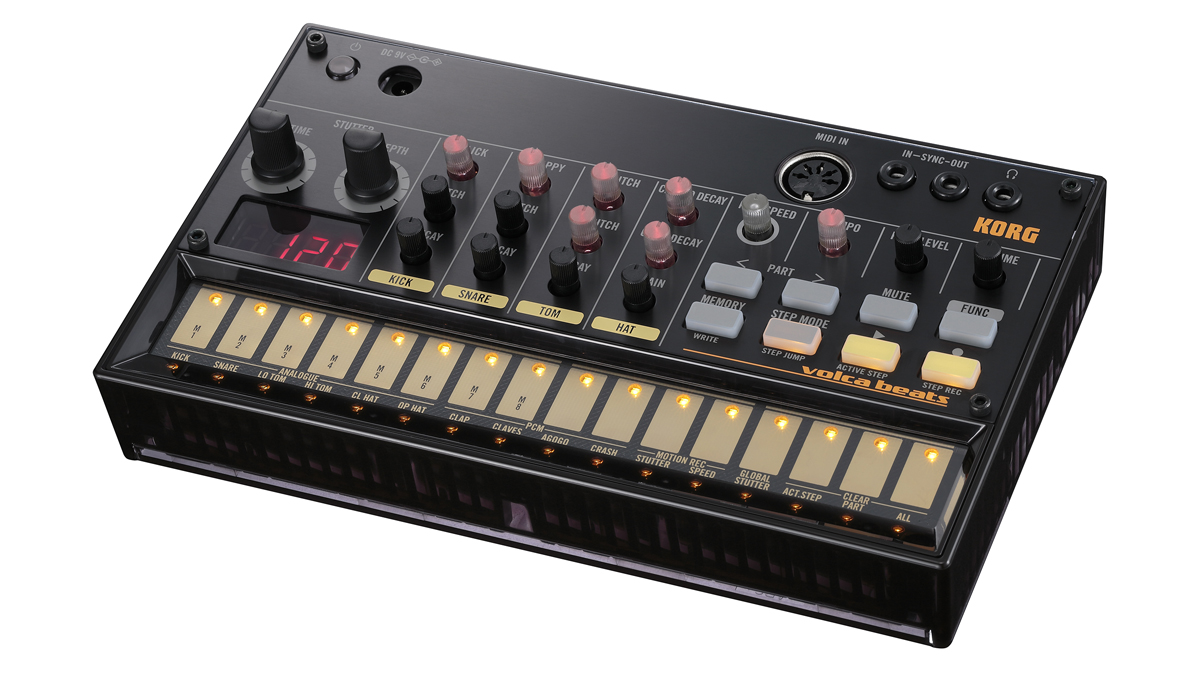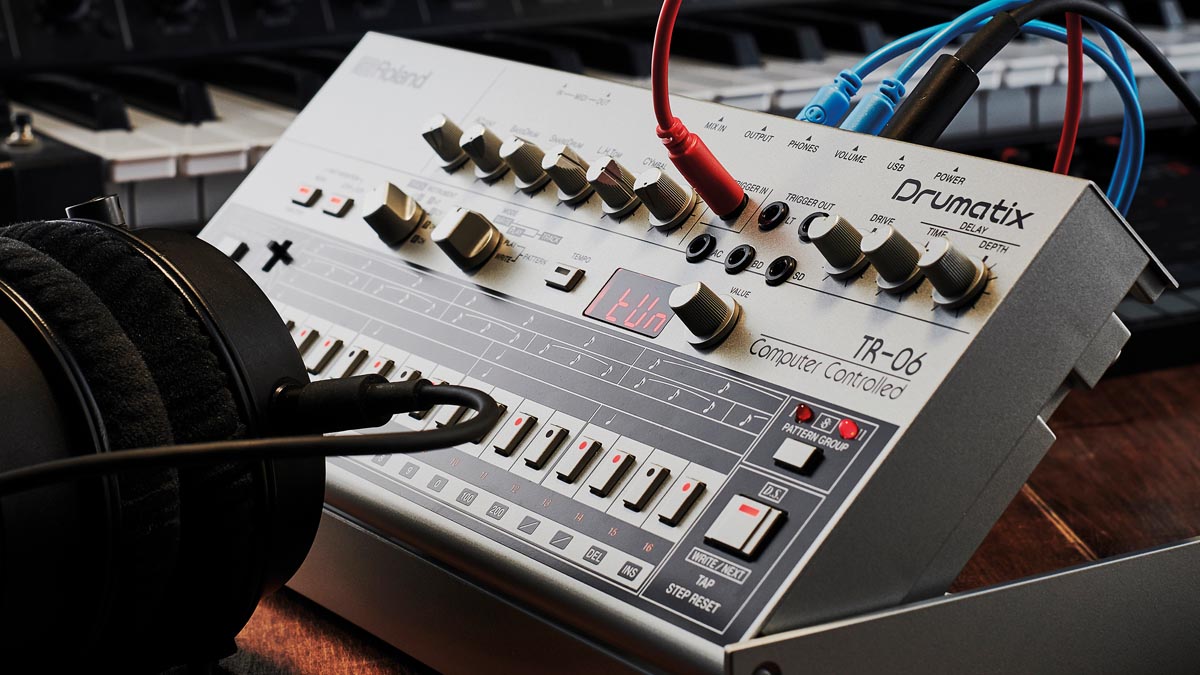MusicRadar Verdict
The TR-06 is decent in its own terms, but there are better ways to get these exact sounds for the same money.
Pros
- +
Convincing 606 sounds – now with tuning and editing!
- +
Sequencer adds sub-steps and probability.
- +
Good range of analogue trigger outputs.
Cons
- -
The 606-style UI means lots of parameters are buried in menus.
- -
Both the TR-6S and Roland Cloud arguably offer better value access to these same ACB 606 sounds.
MusicRadar's got your back
What is it?
Despite past reluctance to revisit gear from their back catalogue, in modern times Roland has developed an established routine for reissuing their classic synths and drum machines.
The basis for this strategy is their Analog Circuit Behavior (ACB) tech, which has been used to create – admittedly impressive – digital circuit-level emulations of the sound engines behind TRs, Junos, Jupiters and other vintage Roland highlights.
These emulations fuel two product streams – the virtual Roland Cloud plugins and compact, battery-powered Boutique hardware.
Following in the footsteps of the 808 and 909, the latest instrument to get the reissue treatment is the TR-606, the percussive counterpart to the TB-303 originally released in 1982.
The original 606 maintains something of a cult classic status for its sound, which was punchy and electronic – a perfect fit for the burgeoning dance, industrial and electro-pop scenes of the early-’80s. In many ways though, the 606 was a very primitive instrument.
Its seven sounds had no editable tuning or shaping parameters beyond a volume control, and its modern-for-the-time sequencing features, including the ability to chain patterns and to edit them during playback, seem basic by modern drum machine standards.
Performance and verdict
Unsurprisingly Roland has added some significant updates for this Boutique version. Each sound, aside from the hats, now offers at least three variations, and there’s full editing of tuning, decay, pan and sound-specific character parameters such as snare snappiness or tom noise level.
Want all the hottest music and gear news, reviews, deals, features and more, direct to your inbox? Sign up here.
However, due to the limitations of broadly replicating the original’s interface design, most of these parameters are resigned to shift functions and sub-menus. The TR-06 also adds several effects, with per-track compression, a global multi-mode overdrive and multi-mode delay/reverb send.
The I/O is significantly improved from the original 606. As with other Boutiques, the main output is a mini-jack, but you can stream audio via USB too. There’s also a separate headphone out, audio in – running through the onboard effects – and MIDI in and out. The smartest update to the TR-06 comes in its expanded range of analogue trigger ports.
With its dual trigger outputs, the original 606 was a popular choice for driving other gear, and Roland have doubled down here with a trigger input, plus individual outs from the accent, bass drum, snare, and low and high tom tracks. This Boutique also introduces some nice sequencer touches, such as sub-steps and step probability values.

• Korg Volca Beats
Perfect for producers that are tight on space but want quality analogue drums without breaking the bank.
• Arturia DrumBrute Impact
Not the most versatile on the market, but it combines quality drum synth sounds with a killer sequencer, at a very tempting price.
This aside though, the TR-06 suffers from being constrained by its inspiration and outflanked by its own siblings. It was released alongside the excellent, similarly-priced TR-6S (reviewed last issue) which also features 606 sounds, generated by the same ACB engine, albeit in amongst a vastly expanded offering of emulated, sampled and FM tones, plus additional effects.
While the TR-06 does have an extra track, and the 6S lacks the trigger outputs, side-by-side the more modern TR-6S looks like the better value, more appealing proposition. What’s more, while the TR-06 looks the business, it suffers from being shoehorned into a UI based on the original 606, so the bulk of editing and effect parameters are buried behind shift presses and sub-menus.
The combination of 606 sounds and analogue triggers will appeal to a specific set of users, but for most, the TR-6S, or a Roland Cloud plugin subscription, offer better value ways to get your 606 fill.
MusicRadar verdict: The TR-06 is decent in its own terms, but there are better ways to get these exact sounds for the same money.
Hands-on demos
BoBeats
Reverb
Roland
Specifications
- KEY FEATURES: Analog Circuit Behavior-powered drum machine
- TRACKS: Accent, Bass Drum, Snare Drum, Low Tom, High Tom, Cymbal, Open High Hat, Closed High Hat
- I/O: Main mini jack out, headphone mini jack out, mini-jack in, MIDI in and out, USB, trigger input, 5x trigger out (AC, BD, SN, LT, HT)
- CONTACT: Roland
I'm the Managing Editor of Music Technology at MusicRadar and former Editor-in-Chief of Future Music, Computer Music and Electronic Musician. I've been messing around with music tech in various forms for over two decades. I've also spent the last 10 years forgetting how to play guitar. Find me in the chillout room at raves complaining that it's past my bedtime.
